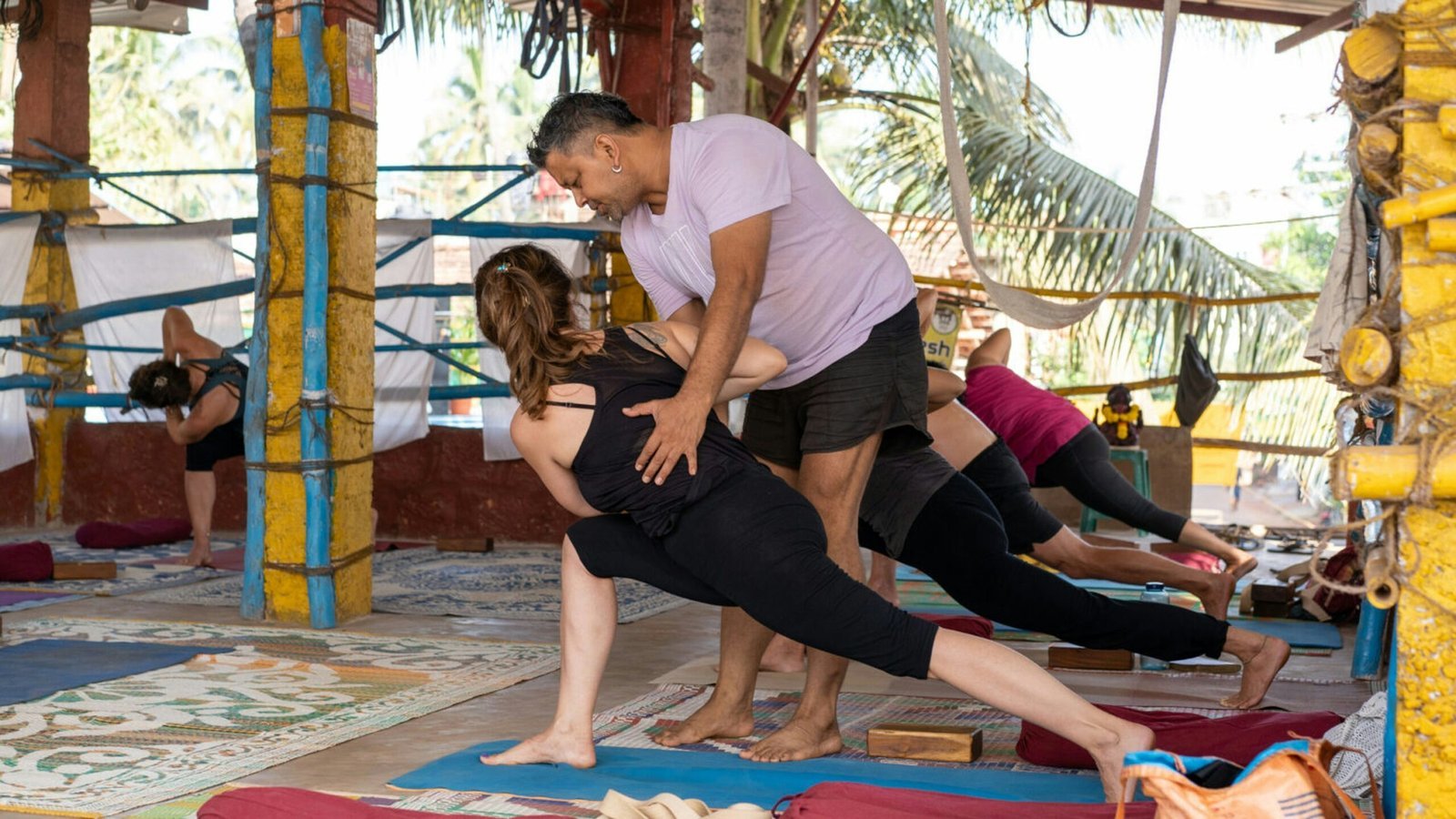How Yoga Helps Flexibility and Hormonal Balance in Women

Introduction: The Connection Between Flexibility and Hormonal Balance
In recent years, yoga has emerged as a vital practice for maintaining overall well-being, particularly among women. As a holistic approach to health, yoga combines physical movement, breathing techniques, and mindfulness, offering significant benefits for both mental and physical aspects of life. Recent statistics reveal that approximately 36 million Americans practice yoga, with many users citing improvements in flexibility and hormonal balance as driving factors for their commitment to this ancient discipline.
The connection between yoga for flexibility and hormonal balance cannot be understated. Flexibility in the body does not merely pertain to physical agility; it also plays a vital role in how women manage hormonal fluctuations throughout their monthly cycles. Poses commonly practiced in stress relief yoga help to not only enhance physical flexibility but also contribute to optimal endocrine function, which is pivotal for hormonal balance. This connection suggests that a flexible body supports a flexible mind, allowing for more effective hormonal regulation.
Moreover, various yoga styles are tailored to address specific health concerns. For instance, restorative yoga focuses on gentle stretches and relaxation, promoting not just physical flexibility but also emotional resilience. This is crucial, as emotional well-being has a direct impact on hormonal health. Additionally, poses that encourage blood circulation assist in achieving balance within the endocrine system, reinforcing the relationship between yoga and hormones. Women who incorporate yoga for balance into their routines often report heightened energy levels and improved mood, which can be attributed to the harmonization of both body and mind.
As we delve deeper into the myriad benefits that yoga offers, it becomes increasingly clear that the practice is more than just a physical workout. It is a transformative journey towards achieving flexibility, hormonal balance, and holistic health. The intertwining of these elements presents a comprehensive approach to women’s health that warrants exploration.
Understanding Flexibility: Physical and Emotional Benefits
Flexibility plays a crucial role in physical health and emotional well-being. Physically, flexibility refers to the range of motion in the joints and muscles, which is essential for maintaining mobility and preventing injuries. Regular practice of yoga for flexibility enhances physical strength and flexibility through various poses and stretches that systematically engage different muscle groups. As practitioners transition from one posture to another, they not only improve their range of motion but also foster body awareness, empowering them to listen to their bodies’ signals and adjust their movements accordingly. This heightened awareness can reduce the risk of injury during both yoga routines and daily activities, encouraging a more active lifestyle.
On the emotional side, flexibility transcends physical limitations. Emotional flexibility involves the ability to adapt to changing circumstances and navigate life’s challenges with resilience. Stress relief yoga, for instance, emphasizes relaxation techniques and breathing exercises that cultivate emotional balance and stability. By engaging in yoga, women learn to embrace change rather than resist it, which can significantly mitigate feelings of stress and anxiety. This adaptability not only helps individuals cope with daily stressors but also fosters a greater sense of peace during life transitions.
This duality of stretching the body and soothing the mind is perhaps best illustrated in specific yoga practices that focus on achieving hormonal balance. Through poses that promote better circulation and energy flow, practitioners can achieve a more harmonious relationship with their hormones. Consequently, by integrating yoga and hormones into their routine, women often notice improvements in mood and overall well-being. Therefore, understanding flexibility from both a physical and emotional standpoint can lead to significantly enhanced quality of life.
Hormonal Balance: The Role of Yoga in Women’s Health
Hormonal balance plays a crucial role in women’s health, influencing various physiological processes and emotional well-being. Women experience significant hormonal fluctuations throughout life stages, such as menstruation, pregnancy, and menopause. These changes can lead to a myriad of symptoms, including mood swings, fatigue, and irregular cycles. Engaging in regular yoga practice offers a holistic approach to managing these symptoms and promoting hormonal equilibrium.
Yoga for flexibility serves as an impactful tool in this context, as it not only enhances physical adaptability but also supports the endocrine system in regulating hormone production. Specific asanas, or poses, such as the Cobra Pose (Bhujangasana) and Bridge Pose (Setu Bandhasana), gently stimulate the thyroid and adrenal glands, which are integral to hormonal health. By promoting blood flow to these areas, yoga encourages proper hormone secretion, helping to mitigate imbalances that may lead to stress or anxiety.
Breathing techniques, or pranayama, also play a significant role in stress relief yoga practices. They facilitate the reduction of cortisol levels, the primary stress hormone, which can disrupt the delicate balance necessary for optimal hormonal function. By incorporating these techniques into a daily routine, women can effectively manage stress-related hormonal fluctuations that arise due to busy lifestyles or psychological pressures.
Moreover, yoga helps alleviate symptoms associated with the menstrual cycle and menopause. For instance, restorative yoga can ease menstrual cramps and reduce the severity of hot flashes during menopause, providing natural relief without the need for medication. In essence, consistent yoga practice not only fosters flexibility but also enhances hormonal balance, assisting women in navigating the complexities of hormonal changes at each life stage.
Practical Tips for Incorporating Yoga into Your Routine
Incorporating yoga into your daily routine can be a transformative experience, particularly for women seeking enhanced flexibility and hormonal balance. To begin, it is essential to choose the style of yoga that best aligns with your needs. Hatha yoga offers a gentle introduction to the practice, focusing on basic postures that promote flexibility. Alternatively, Vinyasa yoga, which emphasizes seamless movement through sequences, can also help develop strength and hormonal balance due to its dynamic nature.
When starting, consider dedicating a specific time each day to your yoga practice. Consistency is key in achieving the desired benefits of yoga for flexibility and hormonal balance. Aim for at least 20-30 minutes to engage in a routine that includes a mixture of poses targeting areas such as the hips, spine, and hamstrings. Poses such as Downward-Facing Dog (Adho Mukha Svanasana), Butterfly Pose (Baddha Konasana), and Cat-Cow Pose (Marjaryasana-Bitilasana) are particularly beneficial for enhancing flexibility and providing stress relief. These poses encourage the release of tension and support hormonal regulation.
In addition to physical postures, integrating mindfulness and meditation into your practice can significantly enhance the benefits of yoga. Practices such as pranayama, or breath control, can stabilize emotions and contribute to hormonal balance. To deepen your practice, consider setting aside time for meditation post-yoga, focusing on harmonizing your thoughts and emotions. This holistic approach can be particularly beneficial for managing stress and improving overall well-being.
Remember, the journey of yoga is personal. Embrace your unique path and transition into exploring the various styles, poses, and meditative practices that resonate with you. By creating an environment conducive to your yoga practice, you will empower yourself to utilize the full potential of yoga for both flexibility and hormonal balance.





